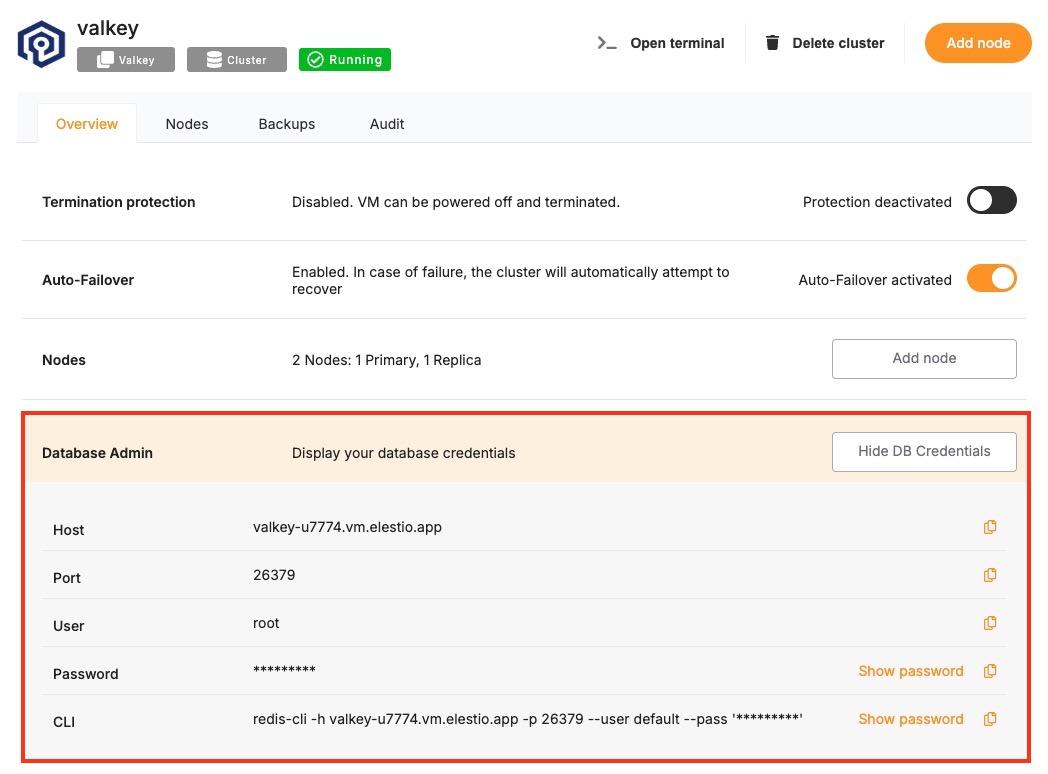Connecting with Go
This guide explains how to establish a connection between a Go application and a Valkey database using the go-redis package. It walks through the necessary setup, configuration, and execution of a simple Valkey command.
Variables
Certain parameters must be provided to establish a successful connection to a Valkey database. Below is a breakdown of each required variable, its purpose, and where to find it. Here’s what each variable represents:
|
Variable |
Description |
Purpose |
|---|---|---|
|
|
Valkey hostname, from the Elestio service overview page |
The address of the server hosting your Valkey instance. |
|
|
Port for Valkey connection, from the Elestio service overview page |
The network port used to connect to Valkey. The default port is 6379. |
|
|
Valkey password, from the Elestio service overview page |
The authentication key required to connect securely to Valkey. |
These values can usually be found in the Elestio service overview details as shown in the image below, make sure to take a copy of these details and add it to the code moving ahead.
Prerequisites
Install Go
Check if Go is installed by running:
go versionIf not installed, download it from golang.org and install.
Install the go-redis Package
The go-redis package enables Go applications to interact with Valkey. Install it using:
go get github.com/redis/go-redis/v9Code
Once all prerequisites are set up, create a new file named valkey.go and add the following code:
package main
import (
"context"
"fmt"
"time"
"github.com/redis/go-redis/v9"
)
func main() {
opt := &redis.Options{
Addr: "HOST:PORT",
Password: "PASSWORD",
DB: 0,
}
valkey := redis.NewClient(opt)
ctx, cancel := context.WithTimeout(context.Background(), 5*time.Second)
defer cancel()
err := valkey.Set(ctx, "testKey", "Hello Valkey", 0).Err()
if err != nil {
fmt.Println("Valkey operation failed:", err)
return
}
val, err := valkey.Get(ctx, "testKey").Result()
if err != nil {
fmt.Println("Valkey operation failed:", err)
return
}
fmt.Println("Connected to Valkey")
fmt.Println("Retrieved value:", val)
if err := valkey.Close(); err != nil {
fmt.Println("Error closing connection:", err)
}
}To execute the script, open the terminal or command prompt and navigate to the directory where valkey.go is located. Once in the correct directory, run the script with the command:
go run valkey.goIf the connection is successful, the terminal will display output similar to:
Connected to Valkey
Retrieved value: Hello Valkey
